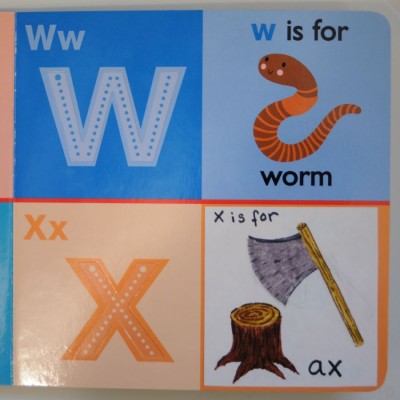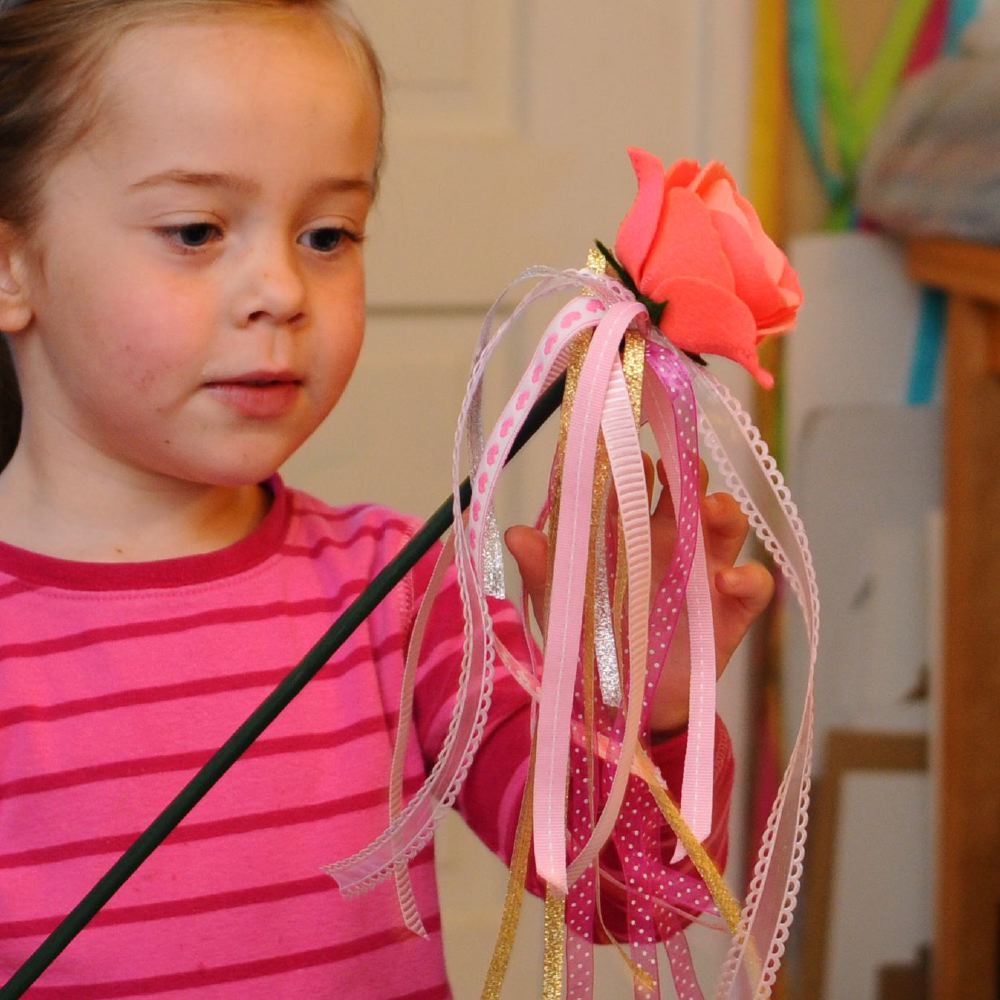Or maybe it’s just me? Before I had children, I was fine with your generic alphabet book. But then I had children, and I started reading about the Montessori way of teaching literacy, by calling the letters by their primary phonetic sound rather than their name, which leads much more naturally to reading, which lead to me trying to figure out exactly how you were supposed to pronounce short ‘o’, and learning about how words that start with the letter ‘a’ are actually pronounced using 50 bajillion different phonemes, and learning about some other pronunciation discipline that I can’t even remember now because I had a second child in the interim, and there goes my brain.
But anyway, I had this book, that I really liked, the vowels were all great, (and it has neat indentations for tracing the letters with your fingers, almost as good as sandpaper letters), but every time I got to ‘X’ I got really irritated. ‘X’ does not say ‘zzz’ (xylophone), it says ‘kss’! (I finally figured out why people write ‘x’ for kiss!) Don’t get mad get even! Or better yet, just fix the darn thing. There pretty much aren’t any ‘x’ words that start with the proper phoneme, so you just have to go with ox or ax and emphasize the trailing phoneme rather than the leading one. Personally I think that’s better than the ‘correct’ phoneme being no where in the word. Sure ‘x’ says ‘zzz’ sometimes, but most of the time when you come across it in a CVC type word it is going to be saying ‘kss’. End of rant. FOR THE MOMENT!




6 Comments
Add Yours →Your replacement illustration is fabulous =)
Thanks Maryanne.
I found this post very intriguing! You have me wondering now…. for the letter C do you teach all of the options? or stick with the usual “Cat”? I find the logic behind teaching the alphabet phonetically so simple and so sensical and I will certainly bring it into my everyday teachings! Thanks for the great post!
For each of the letters you use the ‘primary’ phonetic sound as it’s name, and for the vowels that is the ‘short’ vowel sound. So when you were reading an alphabet book and you were on the ‘C’ page, say it says, ‘C is for Cat’, you would read it as ‘kuh is for Cat’. (We did a lot of this with Rebecca, but gave up when she started regular preschool and started using conventional letter ‘names’.) At some point once they are familiar with the sound-names you progress to talking about alternate sounds that letters can say. Like Giraffe (soft G), Knight (silent K), Circus (soft C) etc. Waldorf has a lot of neat story lessons about alternate letter sounds which I also found facinating. Like Noisy Ned (the N) who is so loud that sometimes you can’t hear the K or G in front of him (Knight, Gnat…) and the (K)ing needing help because he had too much work, so sometimes the (C)at helps him out with his sound. (The stories are longer than that, but that’s the gist.) I wish I knew more of them!
I’ve been having such fun bouncing around this blog.
We have this book and I love it; it seems no matter what, every pre-made alphabet has a few dud words. I mean, if you’re teaching a kid who doesn’t know the letters, they’re probably a toddler, and have a limited knowledge of the world. Mine didn’t have any idea what a Saw was, or a Lock [padlock], and so on. Or an Ax, for that matter. But you’re right about the X noise.
But most of all I wanted to ask – could you direct me to the company/website/program that you refer to in your response above (Waldorf)? I would love to have that letter-teaching resource to draw on. Thanks!
Thank you so much for this question. Much like my daughter, sometimes I don’t bother to do something for myself, but if someone else needs help then I can perform! This question has gotten me to try again to research the Waldorf stories again. I have tried to do it before, but the truth is that Waldorf by its very nature is extremely limiting of computer use, such that the classroom songs and stories that I have wanted to learn seem to be local undocumented school knowledge, I’ve only got snippets of them, and their resources in general can be difficult to find online. But here is one woman’s letter story, which is very wonderful. Everyone seems to have their own way of linking stories and pictures with the capital and lowercase letters, working with the imaginative and improvisational goals of Waldorf. I think that is the problem that I ran into before, the stories that I wanted to research were very specific ones that I had heard or read about, and I just couldn’t find them duplicated anywhere. There do seem to be resources available now that I am looking again, just not the specific stories I wanted about Noisy Nimmy (I thought it was Ned) dominating the silent G’s and K’s, or the King (‘K’) who needed help with all his work and finally found a helper in the Cat (‘C’). I got those stories from “Understanding Waldorf education: teaching from the inside out By Jack Petrash”, but they were just anecdotes in a discussion of general theory, and I wanted more! (Now that I realize it is Nimmy not Ned I found this pdf that you can read the story on page 6: http://www.tidewaterschool.org/sup/downloads/newsletter-beachpea-200705.pdf)
And here are some other relevant resources that you can probably play follow-the-link through all week (I have only skimmed them, and will be doing more reading myself!):
Waldorf Curriculum: First Grade – Capital Letters (Has some book recommendations)
Ancient Hearth: Grade 1: Summary of Capital Letters Language Arts Block
A long lecture on “Learning to Read & Write in the Waldorf Schools”
INTRODUCING THE LETTERS OF THE ALPHABET, WALDORF STYLE (More books recommended by parents)
If you do get any of the referenced books I would love to know what you think of them.